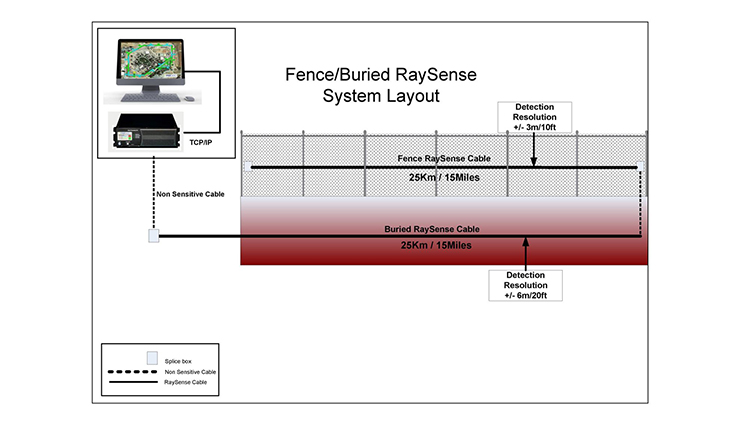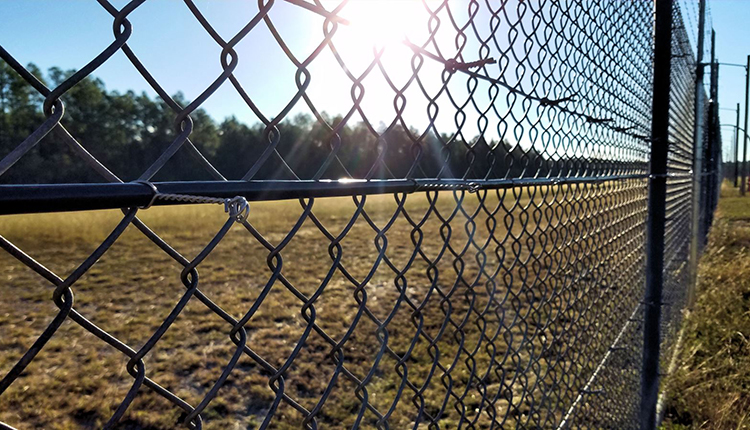Why Fiber Optic Safety And Security Solutions Are the Future of Security
The shift to fiber optic security systems notes a significant improvement in the world of security, driven by their exceptional data transmission capabilities and resilience to exterior interferences. As the landscape of safety and security progresses along with arising modern technologies such as AI and IoT, the potential for fiber optics to boost and redefine security infrastructures comes to be progressively evident.
Benefits of Fiber Optic Systems
One of the primary advantages of fiber optic systems is their remarkable data transfer ability, which helps with the transmission of large quantities of data over long ranges without considerable loss. This particular is specifically useful for security applications that call for the continual surveillance and transfer of high-definition video clip feeds, sensing unit data, and various other essential details. Fiber optics can accommodate the expanding needs of modern security systems, guaranteeing that information stays intact and reliable.
Furthermore, fiber optic cables are much less vulnerable to electromagnetic disturbance, which can be a significant concern in atmospheres with various digital devices. This resistance boosts the stability of the information being transferred, thereby decreasing the risk of information breaches or system failures. Fiber optic systems are naturally much more safe than traditional copper cable televisions, as touching into a fiber optic line without discovery is exceptionally difficult.
The durability of fiber optic cords also adds to their allure. They are resistant to environmental aspects such as dampness and temperature fluctuations, minimizing upkeep expenses and raising system longevity. In general, these advantages setting fiber optic systems as a durable and effective option for modern-day safety and security frameworks, making sure reliable and secure information transmission.
Enhanced Data Transmission Rate

The capacity to transfer large quantities of information swiftly promotes the seamless assimilation of high-def video clip feeds and progressed analytics. Safety and security systems can currently process and evaluate info in real-time, improving reaction times and situational recognition. In addition, fiber optic links support longer transmission ranges without deterioration of signal quality, making them perfect for expansive protection networks.
The boosted rate of fiber optic systems not just improves the efficiency of security operations but additionally reduces latency. This is specifically important in critical scenarios where prompt decision-making can stop safety breaches or alleviate potential threats. As organizations remain to focus on safety and security and efficiency, the need for quick and trustworthy data transmission will undoubtedly strengthen fiber optic systems as a foundation of contemporary protection framework.
Resistance to Disturbance
Fiber optic security systems consistently show phenomenal resistance to electromagnetic interference, a critical advantage in atmospheres prone to digital sound. Unlike typical copper cords, which can be negatively affected by electromagnetic areas, radio frequency interference, and various other types of electric disruption, fiber optic cords use light to send data. This integral residential property makes certain that the signals stay clear and unchanged, no matter surrounding digital task.
Making use of glass or plastic fibers in fiber optic modern technology develops an obstacle against disturbance, enabling dependable information transmission even in tough circumstances such as industrial centers, urban areas with high electronic traffic, or areas near radio towers. This characteristic substantially lowers the possibility of signal destruction or loss, making additional info fiber optic systems particularly appropriate for security applications where stability and precision of information are critical.
Furthermore, this resistance to interference enhances the overall efficiency and integrity of protection systems, ensuring that surveillance and sharp systems function seamlessly. In a world where protection is progressively threatened by innovative technologies, the durability of fiber optic systems sticks out as a pivotal function, enhancing their condition as an essential part of contemporary safety and security framework.
Cost-Effectiveness With Time
Significant price financial savings can be attained over time with the implementation of fiber optic safety and security systems. While the preliminary investment may seem higher contrasted to conventional copper-based systems, the long-term monetary advantages become apparent through decreased functional and maintenance prices (fiber security). Fiber optic cable televisions are inherently a lot more long lasting and much less susceptible to ecological elements, which converts to reduce substitute and fixing expenses over their life expectancy
Furthermore, fiber optic systems need less power to run, which even more reduces power costs. Boosted data transmission capacities allow for less repeaters and amplifiers, lessening devices see this financial investment and simplifying installation procedures. The scalability of these systems additionally adds to cost-effectiveness, as organizations can expand their safety and security facilities without sustaining considerable extra expenses.
One more variable to consider is the increased effectiveness in tracking and response capacities that fiber optics give. Enhanced real-time data transmission can lead to quicker event action times, possibly mitigating losses and obligations connected with protection breaches. Altogether, the long-lasting advantages of fiber optic security systems not only warrant the first expenditure yet also position them as a financially prudent option for companies seeking durable protection solutions.

Future Technologies in Protection
Progressing modern technologies are readied to reinvent protection systems, integrating expert system (AI) and artificial intelligence to improve hazard discovery and feedback capacities. These innovations will permit safety and security systems to examine huge amounts of data in real-time, recognizing patterns and anomalies that indicate possible hazards. This aggressive method will certainly enable quicker decision-making and more efficient event actions.
Additionally, the unification of the Net of Things (IoT) is leading the way for interconnected protection gadgets, offering comprehensive surveillance and monitoring. Smart sensing units can pass on information concerning environmental changes, while automated alerts can inform safety personnel instantly of questionable tasks.
In addition, the advancement of biometric innovations will better boost security devices. Facial acknowledgment, fingerprint scanning, and retina recognition are becoming more innovative, supplying layers Web Site of verification that are challenging to bypass.
Final Thought
In final thought, fiber optic safety and security systems stand for a considerable advancement in security innovation, providing unparalleled information transmission rate, resistance to electromagnetic disturbance, and long-lasting cost-effectiveness. As the need for innovative safety and security solutions remains to grow, the integration of optical fiber with emerging modern technologies such as AI, IoT, and biometrics will better boost safety and security facilities (fiber security). The mix of these innovations will ensure a more safe and receptive environment, solidifying optical fiber as a cornerstone of future protection systems